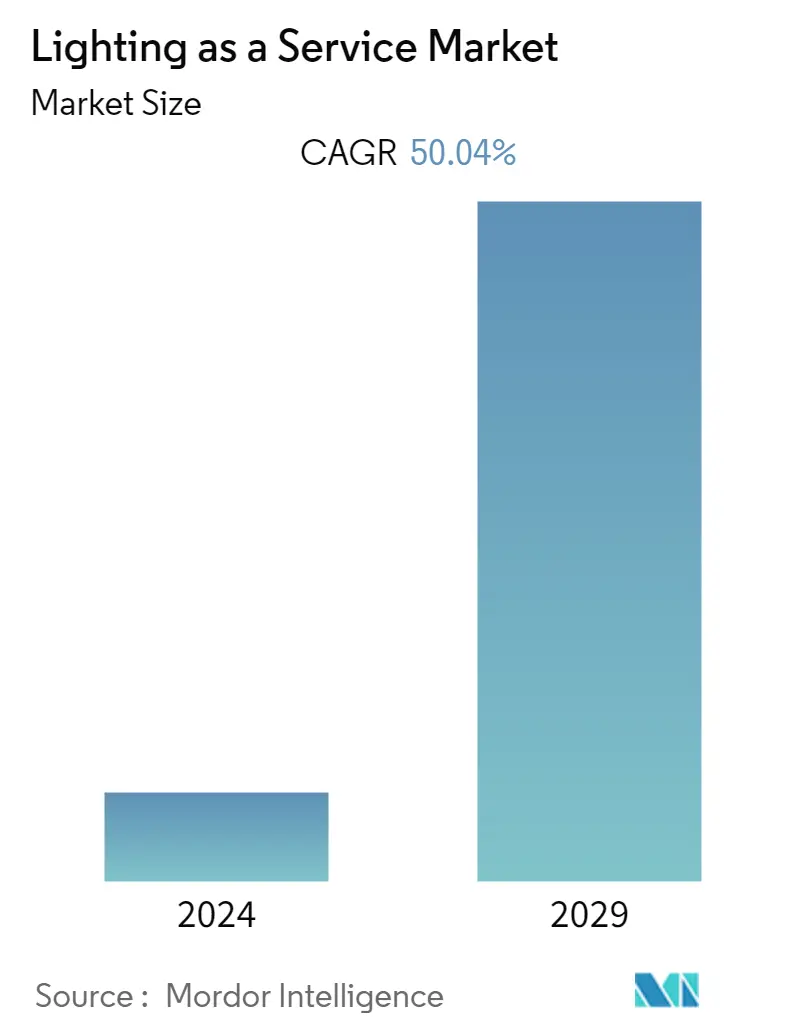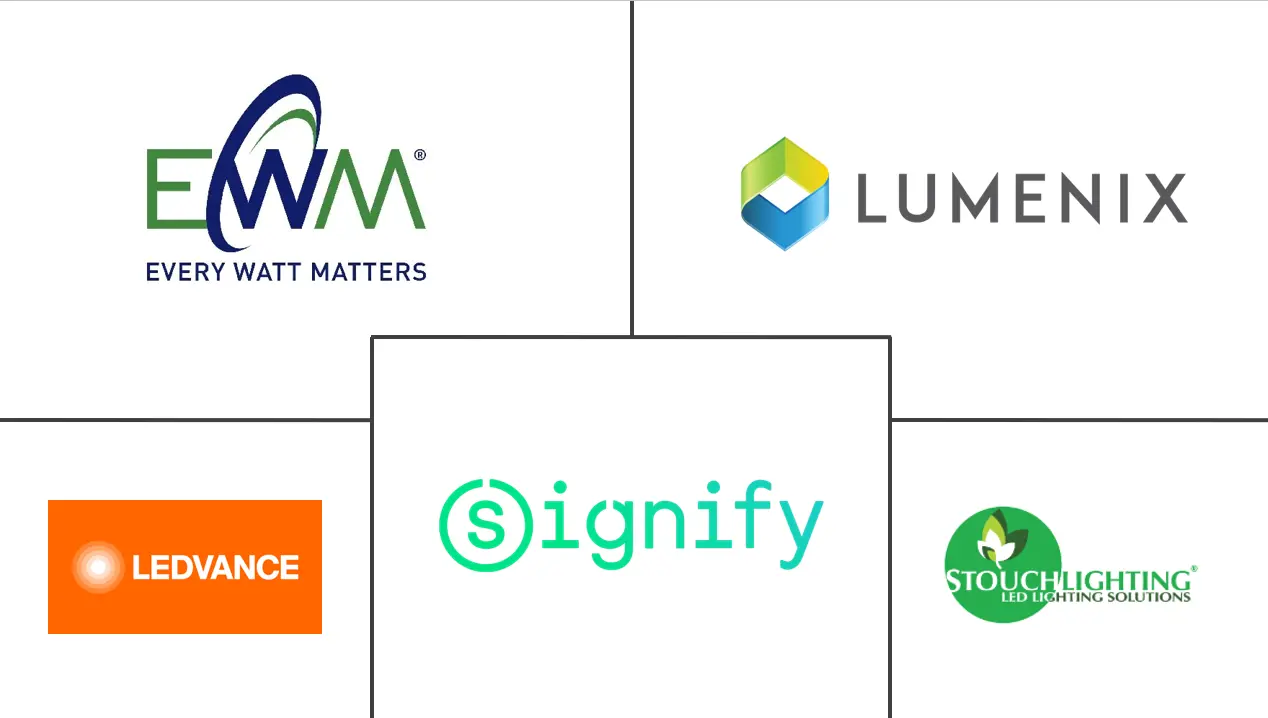Market Size of Lighting as a Service Industry

| Study Period | 2020 - 2029 |
| Base Year For Estimation | 2023 |
| CAGR | 50.04 % |
| Fastest Growing Market | North America |
| Largest Market | Europe |
| Market Concentration | Low |
Major Players
*Disclaimer: Major Players sorted in no particular order |
Need a report that reflects how COVID-19 has impacted this market and its growth?
Lighting as a Service Market Analysis
The lighting as a service market is expected to grow at a CAGR of approximately 50.4% during the forecast period of 2020-2025. The primary driver for the market includes the increasing demand for efficient lighting systems. The growing convergence of the Internet of Things (IoT) in the lighting system has a lower consumption of energy across various parts of the world. However, the service's subscription program typically imposes a higher overall cost than the owner pays for the self-installation system, which can likely pose a challenge.
- Lighting-as-a-Service (LaaS), also known as Light-as-a-Service, is a service-based business model in which light service is charged on a subscription basis rather than via a one-time payment. It is managed by third parties more precisely by specialized service providers and may include light design, financing, installation, maintenance, and other services. The LaaS model has become more common in commercial and citywide installations of LED lights, specifically in retrofitting buildings and outdoor facilities, with the prior aim of reducing installation costs. Light vendors have used the LaaS strategy in selling value-added services, such as Internet-connected lighting and energy management.
- For instance, global LED use has increased substantially in recent years, rising from a market share of 5% in 2013 to nearly half of global lighting sales in 2019, with integrated LED luminaires making up an increasing share. Several developed markets, including the United States and Europe, are responsible for the rapid expansion of the luminaire market segment. At the same time, China has built a substantive domestic and global manufacturing base.
- Moreover, lighting accounts for nearly 10% of electricity usage in households and 18-40% of commercial premises. There is a growing need for energy saving across the globe, creating scope for the market. It is expected that the transition to energy-efficient lighting would reduce the global electricity demand for lighting by 30-40% in 2030. Using 50+% less energy consumption, LED lights to produce brighter, clearer light without the flicker that often irritates the optic nerve leading to employee complaints about headaches and fatigue. Additionally, LED lights contain NO hazardous materials, don't flicker or strobe, and are completely recyclable.
- Countries across the world are widely adopting LED lighting. For instance, New York planned to replace 250,000 streetlights with LEDs, which was to be followed by the replacement of decorative lights in the urban areas. Barcelona (Spain) deployed more than 3,000 smart streetlights based on LED technology, gathering information about pollution, humidity, noise, and the overall environment. Moreover, the US Department of Energy (DOE) anticipates that, by 2020, more than 75% of the outdoor luminaire shipments will be light-emitting diodes (LEDs).
- Additionally, with the continuing spread of COVID-19, technology vendors across the smart building sector are launching new propositions to help firms improve their buildings' infection control. In March 2020, lighting services firm Eco Energy Group (Eco E) launched a new suite of lighting products to help firms improve infection control in buildings. It launched the 'Smart UVC Solution' ultraviolet (UV) light, which can kill bacteria and viruses on surfaces. The 'Smart UVA Solution' can also disinfect surfaces through safe lighting rays. Eco E will deliver these solutions through a lighting-as-a-service business model that requires no capital expenditure.

